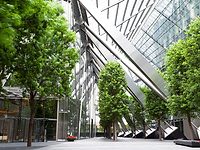While laudable in its intent, the EU’s Biocide Product Directive (98/8/EC) led to a decade and a half of doubt for marine coatings suppliers. This reflected both the number of potential “active substances” falling under the Directive’s oversight, and that expectations for the approved list changed over time. From the early 2000s, coatings manufacturers knew that the biocides used to keep hulls free of fouling would be subject to scrutiny as never before, but the list of substances approved for dispersal in the marine environment was a matter for conjecture.
By 2002, the coatings industry accepted the fact that it would have to withdraw organotin as an antifouling substance following action by the International Maritime Organization. It also believed that it was only a matter of time before regulators would place copper, zinc and possibly other commonly used marine biocides in their sights for phase-out.
Research and Development
With the EU’s approved list process subsequently working in slow motion, paint suppliers concentrated on practical action, and on optimising the performance and lifespan of marine antifouling coatings allowed by law.
Copper remained an effective biocide, although the high concentration required left the substance exposed to the vagaries of the commodities market. Even so, after some maneuvering from the copper industry, copper emerged on the EU’s approved biocide list by 2006. The latest derogation to covering biocidal products containing copper was published in the Official Journal of the EU on 26 June 2014.
Meanwhile, research to find effective biocides that would provide an enduring answer to commercial and environmental imperatives continued. One early candidate for further study proved to be the biocide medetomidine, whose impact on barnacle fouling was first identified by researchers at the University of Gothenburg in Sweden. In 2000, these researchers established a company called I-Tech; further development was funded by the Swedish Foundation for Strategic Environment Research project MISTRA, through a multi-year Marine Paint project. The result of the project was a new biocide called Selektope® (generic name medetomidine). In 2006, I-Tech initiated work for regulatory approvals for this product.
Repellent Technology
Barnacles are a particularly undesirable feature of vessels that spend the greater part of their time in port as part of normal operations, but also attach themselves to ships that are laid up due to commercial factors, or that generally operate at low speeds.
Selektope was found to affect the behaviour of the barnacle larvae in such a way that they would not settle on prepared surfaces. Its antifouling effect is exerted through stimulation of the barnacle larvae’s swimming behaviour, effectively making them unable to attach to a painted surface. As soon as the barnacle leaves the surface, the effect disappears, i.e., it is reversible. The substance performs a repellent mode of action and does not kill its target organism.
Testing has shown that the product is effective even when extremely low amounts are used. In an experiment to demonstrate efficacy, barnacle larvae were exposed to different concentrations of the biocide. The outcome showed that 200 ng/L Selektope could inhibit settlement completely (Figure 1).
According to I-Tech Managing Director Philip Chaabane, “From the environmental point of view, contact with Selektope is not toxic towards the target organisms in the dosages used in paint formulations, but rather stimulates a reaction to a repellent technology. The name is derived from the agent’s highly selective action, while the biocide itself is biodegradable and features neither metals nor any harmful metabolites or other questionable compounds.”
New Opportunities
Two landmark events demonstrated that both regulators and the wider marine coatings market have caught on to this new technology. First, having already secured regulatory approval in China, Japan and South Korea, I-Tech received notification from UK HSE that Selektope had passed the EU evaluation criteria for marine biocides. It has therefore been authorised for approval in the EU. Final EU approval is expected in early 2015. Second, in 2014 I-Tech entered a supply agreement with Chugoku Marine Paints Ltd. (CMP) for use of Selektope in commercial antifouling paints. Selektope is to be used as the principal biocide in new products to be brought to the market by CMP.
The formal announcement of the deal follows the successful conclusion of extensive testing by CMP of Selektope on coastal vessels operating in harsh environments. Figure 2 shows a CMP coating test patch using Selektope-based paint. The coating underwent 12 months of operational trials in severe conditions.
Chaabane expects CMP to come to market with a working coating system using Selektope in the near future. He adds that the coatings envisaged will be based on known polymer technology and will present new-build and repair yards with no issues related to application. Nor does Selektope’s performance degrade over time -its efficacy is driven by how well the coating is formulated in terms of its leaching rate, polishing rates, etc., Chaabane says.
The agreement with one of the three largest companies in the marine paint industry is certainly a coup for I-Tech, a company with only five employees. I-Tech holds all proprietary rights to Selektope or using medetomodine in the marine antifouling application, as well as all regulatory rights to commercialise Selektope. Furthermore, the company already has a production partnership arrangement in place with global life science company Cambrex Corporation.
“CMP’s decision marks not only an important milestone for I-Tech but also sets the starting point for antifoulings using biocides that only target the species of concern, with a minimal use of natural resources and a minimal environmental footprint,” says Chaabane.
In a commercial context, Chaabane adds that the agreement with CMP envisages using Selektope with a co-biocide in order that anti-fouling costs can be kept in check.
“Selektope is a key technology to formulating copper-free, high-performance antifouling paints, but it may very well also be used in combination with competing alternatives as a means of adding value. Either way, Selek-tope is an enabling technology that acts as a means of re-optimising the marine biocides market.”
One attribute of Selektope that was identified early and has proven persuasive all along has been its effectiveness on barnacles in concentrations of about 0.1% w/w (percentage weight/weight). To achieve the same effect, the concentration of copper needs to be around 40%.
Due to the low concentration needed, Selektope does not compromise the paint’s chemical structure, colour or other cooperative biocides involved. Instead it opens up new formulation possibilities for the active ingredients used in controlling antifouling performance.
For more information, visit www.i-tech.se.
By I-Tech AB, Mölndal, Sweden






Report Abusive Comment